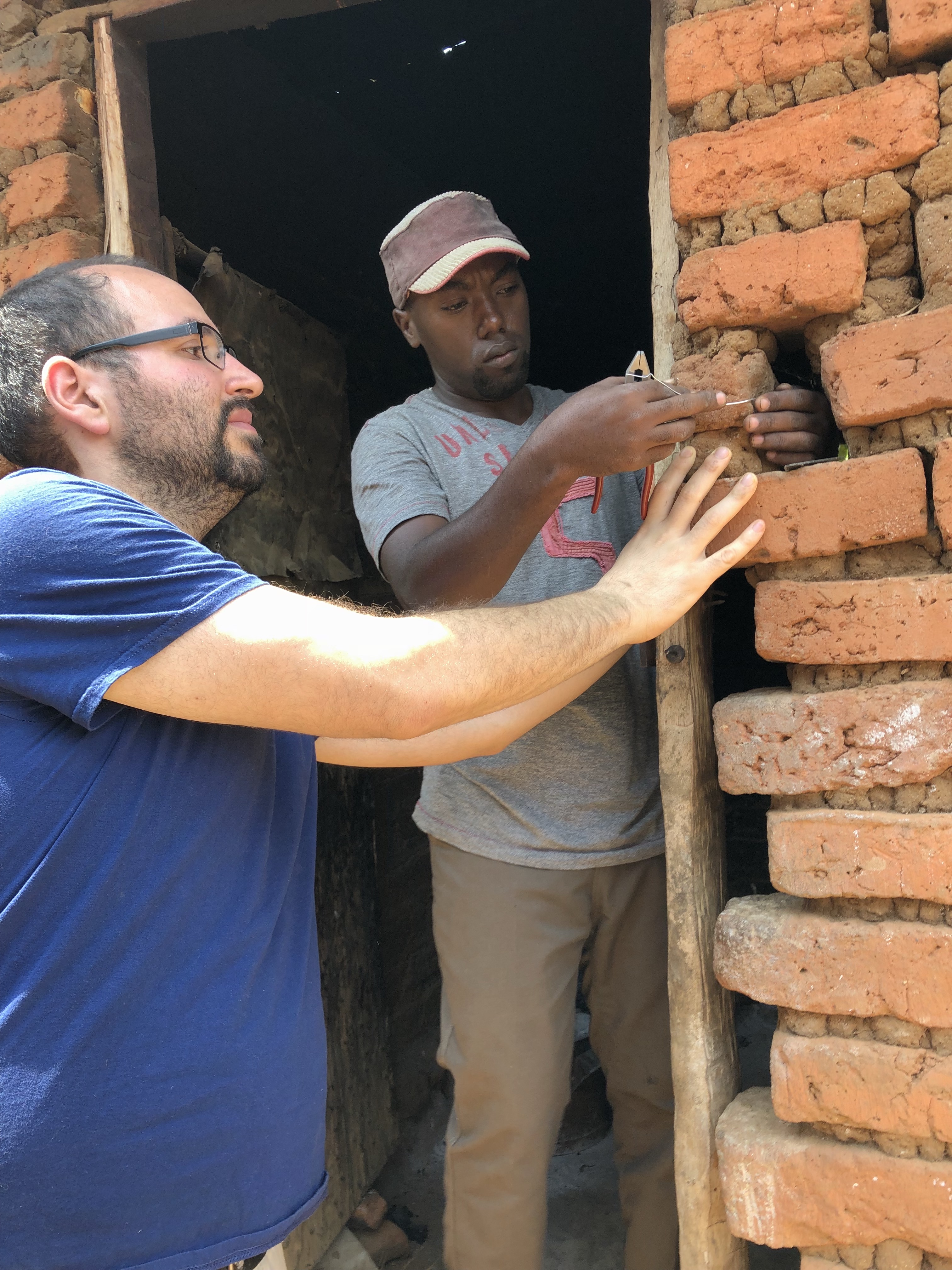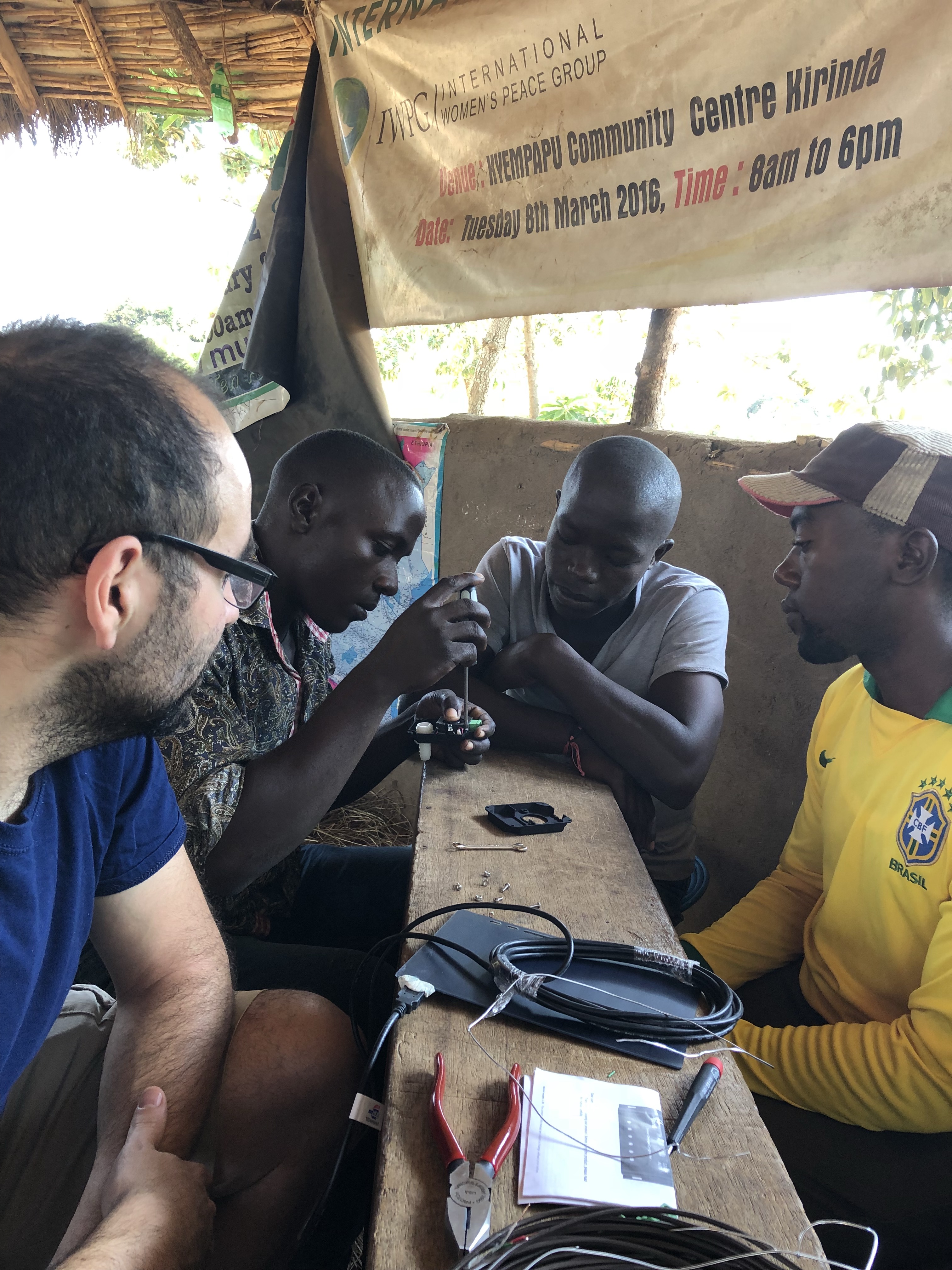Back to Makukuulu Solar-Powered Ventilation Rids African Homes of Cooking Smoke
Byron SpiceTuesday, March 6, 2018Print this page.

Last month, Robotics Institute Research Associates Josh Schapiro and Mike Taylor made good on a promise to villagers in Uganda, returning to the African nation with solar-powered ventilation systems designed to exhaust unhealthy cooking smoke from homes.
They delivered 30 of the systems that they designed and built based on an idea that emerged seven years ago as part of Toyota’s Ideas for Good marketing campaign. They also trained villagers from Makukuulu parish to install, repair and service the devices.
“I didn’t actually install a single one,” Schapiro said, noting the three village men quickly grasped the mechanics of how to set up the system. “We’d walk into a kitchen, the three of them would talk to each other a bit and, before you knew it, the youngest would jump on the roof and they’d start installing it.”
The ventilation systems are compact, consisting of a solar array the size of a tablet computer, a small fan/light assembly that hangs above the cooking area and some flexible plastic tubing to vent the smoke outside.

Initial work on the ventilation system, including a 2013 visit to the village to install five crude, temporary prototypes, was performed with Toyota support. When that funding was exhausted, Schapiro and Taylor, who both work in the CREATE Lab, adopted the “Breeze Project” as their own. Last year, they sought funding for a return trip through generosity.com. They raised $4,000 from that fundraising platform and another $10,000 from the Heinz Family Foundation for last month’s trip.
The systems cost about $175 to build. That’s too pricey for most villagers to purchase, but building larger volumes could bring the price down, Schapiro said. On this visit, Taylor sought local sourcing of parts, such as solar cells. He found the solar arrays available for sale in Uganda to be larger and more expensive than necessary to run the small ventilation fan. Still, the fact that solar arrays are available at all — they weren’t during the 2013 visit — suggests the project may someday become sustainable.
In the meantime, Schapiro and Taylor are looking for other ways they can help the villagers. Waste management is an issue they would like to tackle. Also, half the children in the local public school have no shoes, prompting the pair to research how sandals might be fashioned from recycled plastic bottles.
“We’re definitely going to keep looking for funding,” Schapiro said.
Byron Spice | 412-268-9068 | bspice@cs.cmu.edu
